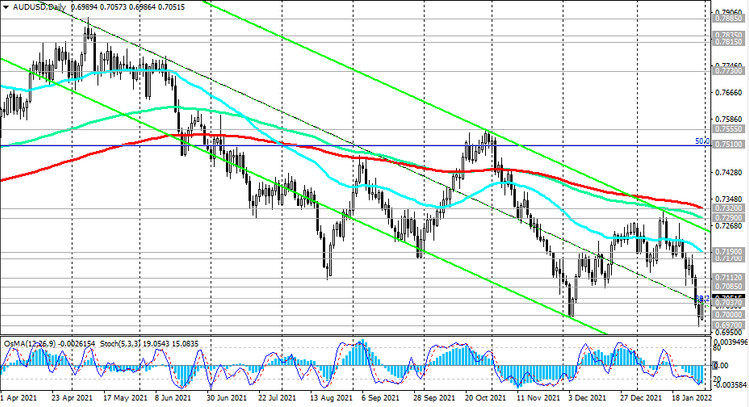The growth of the dollar has stopped. More precisely, it stopped already last Friday, when market participants began to fix part of long positions against the backdrop of weaker-than-expected data on personal expenses / incomes of Americans.
Meanwhile, despite the current decline, economists expect the dollar to strengthen further after Fed officials hinted last week that they might start raising rates in March. According to Fed Chairman Jerome Powell, "there is considerable room to raise rates without jeopardizing the labor market", as "labor market conditions are consistent with full employment". At the same time, the situation with US inflation worsened after the Fed's December meeting, Powell acknowledged, saying that "Fed policy will need to respond in the event of a further deterioration in the situation".
Investors are now pricing interest rate futures with a 100% chance of at least a quarter of a percentage point first rise in March and nearly a 70% chance of a second rise in May, according to CME Group. Moreover, many economists tend to think that in order to curb rising inflation, Fed officials could take a tougher stance by speeding up the rate hike cycle. The increasing divergence of interest rate curves in the US and other economically developed countries will accelerate the breakaway of the dollar against its main competitors in the foreign exchange market.
However, there is one caveat to this assumption. The dollar will strengthen if, as a result of the Fed's actions, inflation starts to decline, the yield of US government bonds will remain high, and the dynamics of the main US stock indices will also generally remain positive.
The worst-case scenario suggests a situation where the Fed will not be able to cope with inflation, and the outflow of foreign investors' funds from US stocks will put additional pressure on the dollar. Then the negative scenario runs the risk of acquiring a rapid character. In the meantime, faith in the US economy, the continued influx of investment funds into it and the hope for the success of the Fed's actions, as it happened more than once in the past, support the dollar quotes. Market participants are betting that the Fed could reach 2% rates this year, which other major central banks in advanced economies cannot afford.
A lot of important macroeconomic news is expected this week, including data on economic growth in the Eurozone and the US Department of Labor's monthly employment report.
Also this week there will be meetings of the 3 largest world central banks: Australia, the Eurozone and the UK. RB of Australia will start first. Its meeting will end on Tuesday with the publication at 03:30 (GMT) of the decision on the interest rate. If at the meeting on Tuesday the RBA leaders confirm the possibility of a scenario of tightening monetary policy, then the AUD can get good support.
Today the AUD is strengthening, including in the AUD/USD pair, having received support from the positive data on Australian producer prices published on Friday and from the positive data on private sector lending published today. Australia's private sector lending rose 0.8% in December, better than the +0.5% forecast, albeit lower than the previous +1.0%.
With the Fed and, now expected, the RBA to start tightening their monetary policies this year, we are yet to see sharp fluctuations in AUD/USD quotes. The upward corrective dynamics may be strengthened by the growth of AUD/USD to the zone above 0.7100. However, all this is just a possible correction so far. In general, the downward dynamics of this currency pair remains, leaving an advantage for short positions on it.






